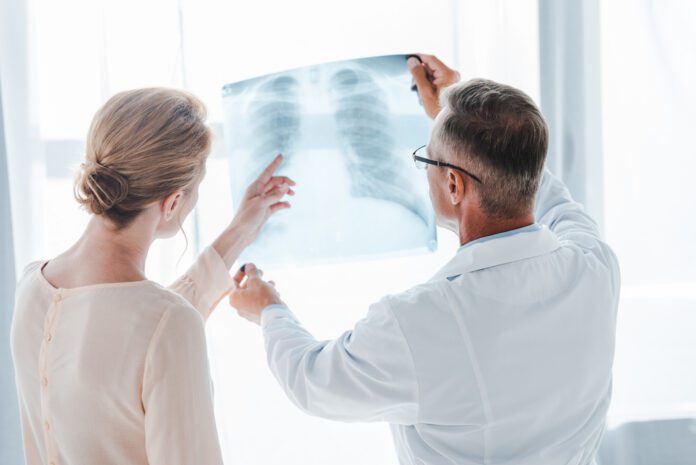Overview Of Histiocytosis
Histiocytosis is a general name for a group of disorders or “syndromes” that involve an abnormal increase in the number of specialized white blood cells that are called histiocytes.
Recently, new knowledge about this family of diseases has led experts to develop a new classification.
Five categories have been proposed:
- L group — includes Langerhans cell histiocytosis and Erdheim-Chester disease
- C group — includes non-Langerhans cell histiocytosis that involves the skin
- M group — includes malignant histiocytosis
- R group — includes Rosai-Dorfman disease
- H Group — includes hemophagocytic lymphohistiocytosis
This article focuses only on the L group, which includes Langerhans cell histiocytosis and Erdheim-Chester disease.
Commonly Associated With
Langerhans cell histiocytosis; Erdheim-Chester disease
Causes Of Histiocytosis
There has been debate as to whether Langerhans cell histiocytosis and Erdheim-Chester disease are inflammatory, immune disorders, or cancer-like conditions. Recently, through the use of genomics scientists have found that these forms of histiocytosis show gene changes (mutations) in early white blood cells. This leads to abnormal behavior in the cells. The abnormal cells then increase in various parts of the body including the bones, skin, lungs, and other areas.
Langerhans cell histiocytosis is a rare disorder that can affect people of all ages. The highest rate is among children ages 5 to 10. Some forms of the disorder are genetic, which means they are inherited.
Erdheim-Chester disease is a rare form of histiocytosis affecting mainly adults that involves multiple parts of the body.
Symptoms Of Histiocytosis
Both Langerhans cell histiocytosis and Erdheim-Chester disease can affect the whole body (systemic disorder).
Symptoms can vary between children and adults, but they may have some of the same symptoms. Tumors in weight-bearing bones, such as the legs or spine, may cause the bones to fracture without an obvious reason.
Symptoms in children may include:
- Abdominal pain
- Bone pain
- Delayed puberty
- Dizziness
- Ear drainage that continues long-term
- Eyes that appear to stick out more and more
- Irritability
- Failure to thrive
- Fever
- Frequent urination
- Headache
- Jaundice
- Limping
- Mental decline
- Rash
- Seborrheic dermatitis of the scalp
- Seizures
- Short stature
- Swollen lymph glands
- Thirst
- Vomiting
- Weight loss
- Note: Children over 5 years old often have only bone involvement.
Symptoms in adults may include:
- Bone pain
- Chest pain
- Cough
- Fever
- General discomfort, uneasiness, or ill feeling
- Increased amount of urine
- Rash
- Shortness of breath
- Thirst and increased drinking of fluids
- Weight loss
Exams & Tests
There are no specific blood tests for Langerhans cell histiocytosis or Erdheim-Chester disease. The tumors produce a “punched-out” look on a bone x-ray. Specific tests vary, depending on the age of the person.
Tests for children may include:
- Biopsy of skin to check for Langerhans cells
- Bone marrow biopsy to check for Langerhans cells
- Complete blood count (CBC)
- X-rays of all the bones in the body to find out how many bones are affected
- Test for a gene mutation in BRAF V600E
Tests for adults may also include:
- Biopsy of any tumor or mass
- Imaging of the body, including x-ray, CT scan, MRI, or PET scan
- Bronchoscopy with biopsy
- Pulmonary function tests
- Blood and tissue testing for gene mutations including BRAF V600E. This testing may need to be done at a specialized center.
- Langerhans cell histiocytosis is sometimes linked to cancer. CT scans and biopsy should be done to rule out possible cancer.
Treatment Of Histiocytosis
People with Langerhans cell histiocytosis that involves only a single area (such as bone or skin) may be treated with local surgery. However, they will need to be followed closely to look for signs that the disease has spread.
People with widespread Langerhans cell histiocytosis or Erdheim-Chester disease require medicines to reduce symptoms and control the spread of the disease. Recent studies show that nearly all adults with widespread histiocytosis have gene mutations in the tumors, which appear to cause the disorder. Medications that inhibit these gene mutations, such as vemurafenib are currently available. Other similar drugs are also in development.
Langerhans cell histiocytosis and Erdheim-Chester disease are very rare disorders. Therefore there is limited information about the best course of treatment. People with these conditions may want to take part in ongoing clinical trials designed to identify new treatments.
Other medicines or treatments may be used, depending on the outlook (prognosis) and response to the starting medicines.
Such treatments may include:
- Interferon alpha
- Cyclophosphamide or vinblastine
- Etoposide
- Methotrexate
- Vemurafenib, if the BRAF V600E mutation is found
- Stem cell transplantation
Other treatments may include:
- Antibiotics to fight infections
- Breathing support (with a breathing machine)
- Hormone replacement therapy
- Physical therapy
- Special shampoos for scalp problems
- Supportive care (also called comfort care) to relieve symptoms
- In addition, people with these conditions who smoke are encouraged to stop since smoking may worsen the response to treatment.



